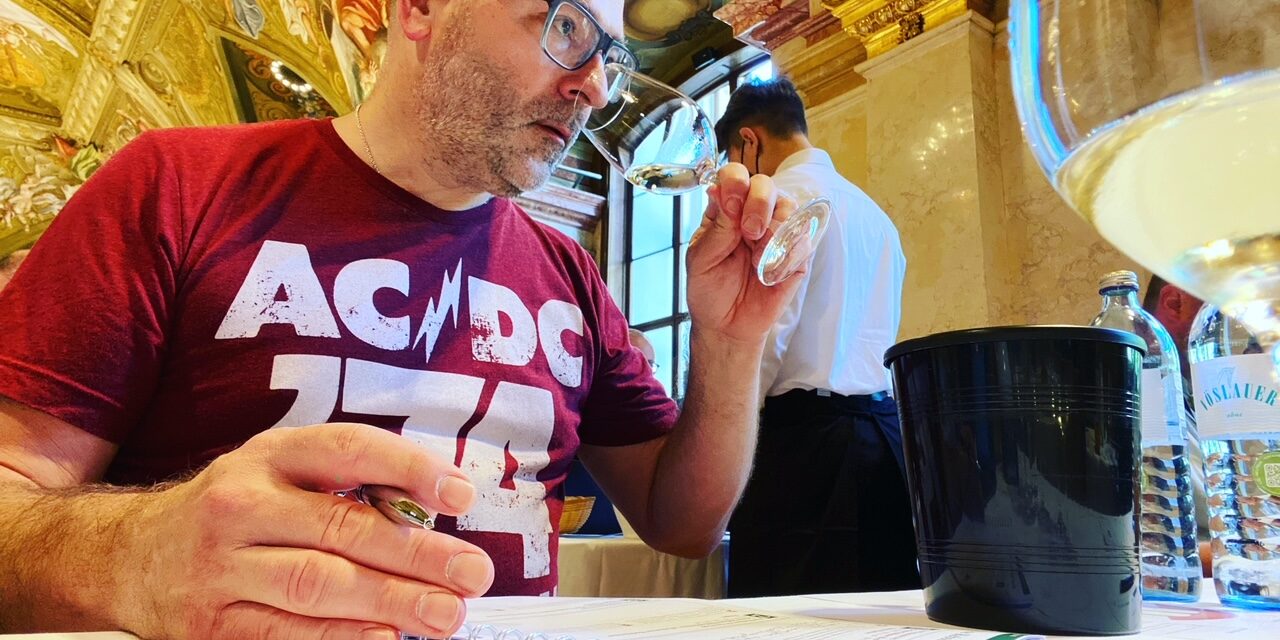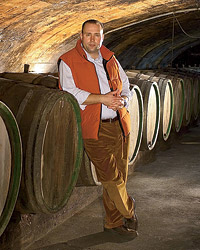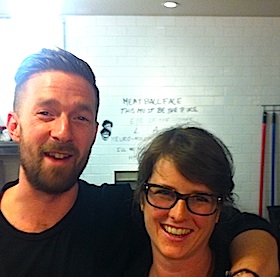The VieVinum show in Vienna reveals a deep wine culture and some of the best values in premium wines available today
By Dick Snyder
Upon landing in Vienna I was more than ready for a glass of good wine — and, perhaps a given, some good schnitzel. I’m not above clichés. And sure, it’s 8:30 a.m. But by noon we’d be skirting the city on bicycles, visiting some of Vienna’s urban wineries and sampling the legendary hospitality at the traditional wine taverns known as heurigen. I’d never heard of heurige culture, but these places are one of the defining elements of Austrian wine culture, an entirely unique and historically important spin on a local wine bar, and usually closely affiliated with a winery.
Just about everything in Austria, I was to discover, has roots going back hundreds of years, at the very least, if not thousands. The cultural confluence here — at the intersection of Germany, Switzerland, Italy, Slovenia, Hungary, Slovakia and the Czech Republic — makes it hard to trace the true origin of most thing. But the fun is in the trying. The arguments among locals, generally, turn out to be generally congenial, with much friendly shrugging and capitulating. (On that note, the Austrian temperament feels quite sympatico with we Canadians.)
This was my first trip to Austria, and my first trip outside of Ontario post-Covid. I was sent to Vienna to report on the bi-annual VieVienum Austrian Wine Fair last May. The fair would kick off two days after my arrival with a formal tasting for media and wine professionals spanning all of Austria’s wine regions, with some 16 flights of six wines each. More on this later (in Part Two), but I came away with a full appreciation of the impressive quality and character of Austria wines across the board. Austria is making fantastic wines representing remarkable values — if, that is, you can find them In Canada — that are exactly on point with current trends in wine tastes red and white: restrained alcohol, medium-light to medium body, crisp fruit flavours, bright and juicy acidity, and textural variety that can match the weight of any dish. (They make lots of natural here wine, too, if you prefer your wines murky and denuded… but I digress.)

Alex Zahel on his vineyards overlooking Vienna.
Vienna first impressions
On this first day in Vienna, fresh off the plane, we would explore some of the city’s wineries. Yes, these are wineries located within the city limits — just minutes from the city centre by bike or by car. Vienna is the only city in the world to be have an appellation designation for wine, with 580 hectares under vine, principally Grüner Veltliner (the top-grown variety in the country), Riesling, Pinot Blanc, and Chardonnay. The official Austrian DAC designations are Wien (Vienna) and Gemischter Satz, a white-wine field blend designated in 2013, though the wines go back many generations. A field blend offers a kind of insurance: chuck a bunch of vineyards in a field and even if some have a bad year, others will have a great year. Hence, a blended wine that always plays in the same refreshing arena.
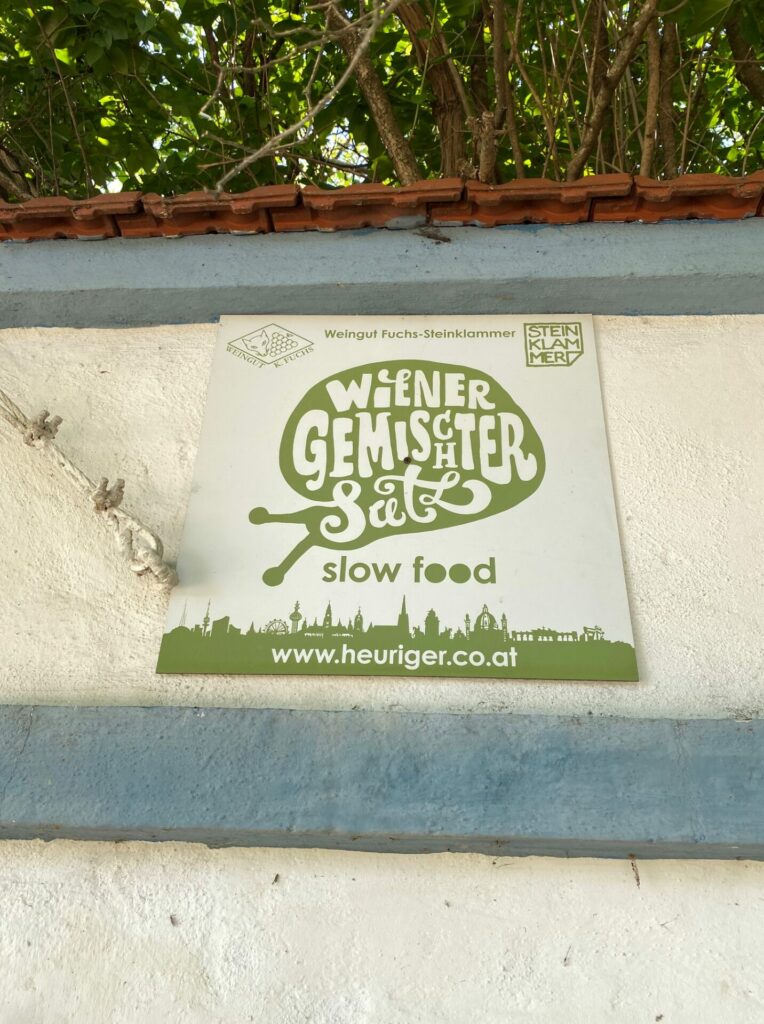
Gemischter Satz is everywhere.
Gemischter Satz — pronounced pretty much as it looks — is a fun wine and the best little wine you’ve probably never heard of. It represents the quintessential Viennese white-wine experience. Its wide range of styles makes it endlessly exciting, as it is a blend of very many white grapes. It’s the antithesis of snooty wine, though the best are very, very good to outstanding. You would do well to not underestimate them. If, that is, you can find any Gemischter Satz at any of Canada’s stunted wine-selling monopolies. Chances are slim that you will, so do ask your friendly and enlightened local wine agent. (A few that come readily to mind, and who were spotted at VieVinum sourcing for the Canadian market: Le Sommelier, The Good Vine, and The Small Winemakers Collection.)
Gemischter Satz is a wine designed to happily accept the addition of some spritz by way of some club soda or a blast from your Soda Stream — in fact, this is encouraged, never mind what the snobs say about the venerable spritzer. Come 5 p.m., if you’re not enjoy a spritz of Gemischter Satz on a sunny patio, this is cause for some concern… you might be asked to leave the city. (Do be careful with that Soda Stream, though, as these machines do not like the presence of wine. Best to spritz your water, then mix the wine and, if desired, ice.) The Austrians serve their spritz in a short, clear mug, rather like a small A&W Root Beer glass. This is how we enjoyed our very first spritz on our very first day, on the patio of Schönbrunn Palace. Well, one of many patios.
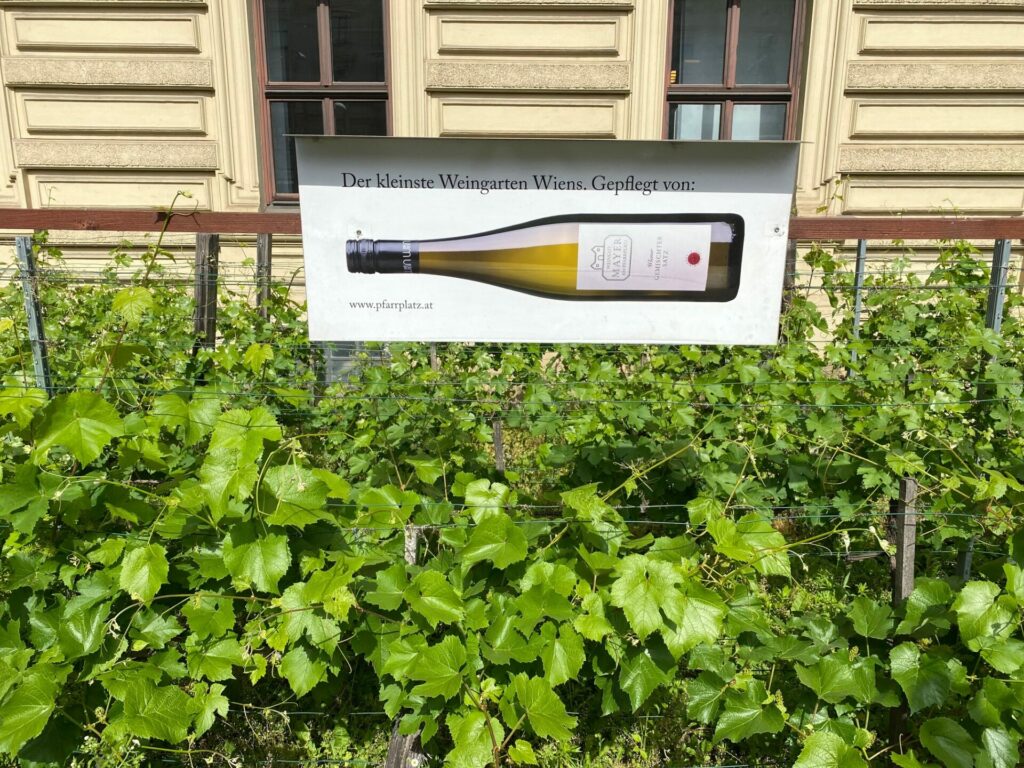
Perhaps the world’s smallest vineyard, located in the centre of Vienna.
One falls into the tempo of Vienna quite easily. It’s a relaxed and efficient city, beautiful to behold and endlessly fun to walk. This is how I’d sum up the vibe of the place: They exude a Germanic appreciation for orderly operations tempered by an Italian spirit of relaxed disinterest. This makes for a charming vibe. Though the Austrians seems to exude a finely tuned appreciation for punctuality and exactitude, they also accepts that time is fluid. Still, here is a transit system that hums along with clockwork precision, one that is easy to use, clean and speedy. If my time in Vienna — and, subsequently, the province of Burgenland, which I will save for Part Two — is any indication, there is only wine, coffee, exemplary food, and the certainty of public transit. The rest… let’s not worry about the rest. It’s a beautiful day, and wine will come… with bubbles added in, no less.
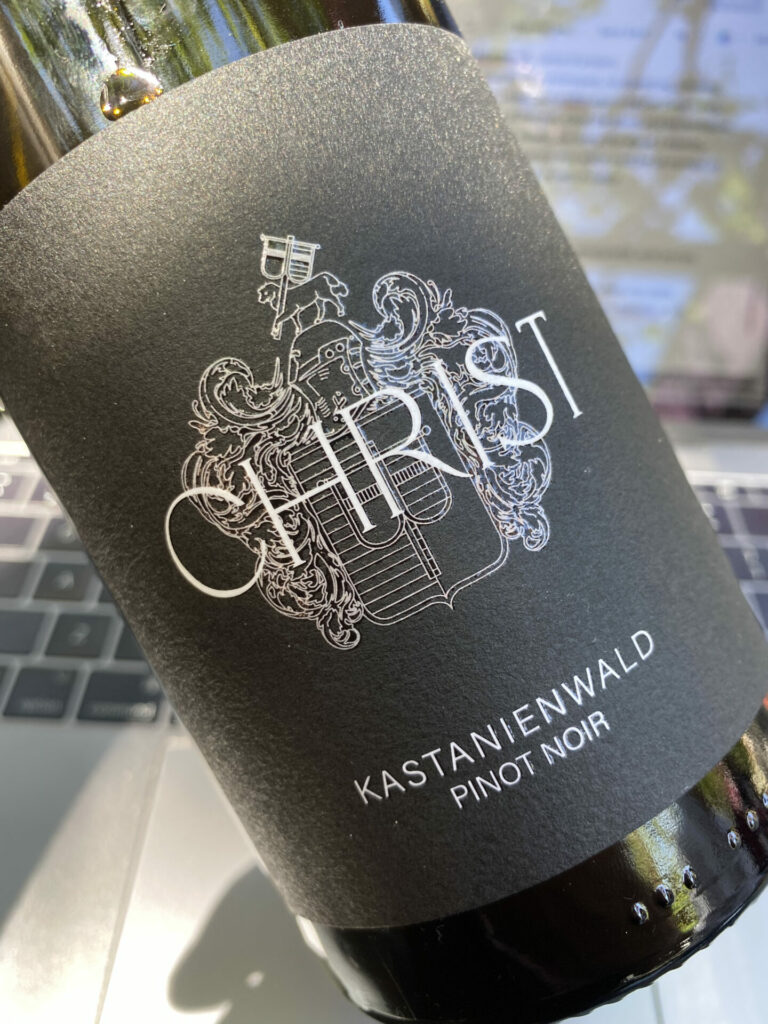
A remarkably poised and perfumed Pinot Noir made by Rainer Christ.
What to buy now
Here’s the quick answer and pretty much all you need to know: The 2021 vintage in Austria was stellar, for reds and whites and everything in between. It was a very good to outstanding vintage in all four major climatic zones, which I will break down here:
The Danube region, running roughly from Vienna in the east to the Wachau in the west, is continental, with the warm Pannonian wind blowing from the east into the Danube River valley. The wines vary in style, influenced by substantial diurnal temperature variations and innumerable soil types, with Riesling, Grüner Veltliner, Pinot Blanc, and Rotor Veltliner dominating. (Re: soil… loess is big here, prompting us to re-write the Bee Gees hit “How Deep is Your Love.”)
Austria’s northernmost wine region is the Weinviertel, defined by the Manhartsberg mountain ridge to the west, the Danube River to the south, and the Czech border to the north and east. Grüner Veltliner is king here, presenting a “peppery” profile and a touch of rusticity. Mesoclimates vary, and so you’ll also find excellent and characterful Riesling, Pinot Blanc, and Welschriesling, along with some red wines.
Big red wines and fuller-bodied whites thrive to the southeast of Vienna in the wide-ranging Pannonian region, encompassing Carnuntum, the Thermenregion and Burgenland. These guys know how to make Zweigelt, St. Laurent and Blaufränkish into something quite special. But you’ll also find complex Pinot Blanc and Chardonnay. Noble rot can be achieved in the Seewinkel area, and premium sweet wines are made around Lake Neusiedl, with the Ruster Ausbruch DAC being most famous.
The southernmost region of Austria is called Steiermark, and this beautiful land of rolling hills — and quite substantial hillsides — produces mostly white wines of fine precision and aromatics character. Welschriesling thrives here, offering a balance of apple and spice notes. Traminer wines are grown on the volcanic soils around Kloch, while Pinot Blanc, Pinot Gris and Morillon (aka, Chardonnay) exude a more robust character. Increasingly, Sauvignon Blanc is becoming “a thing.”
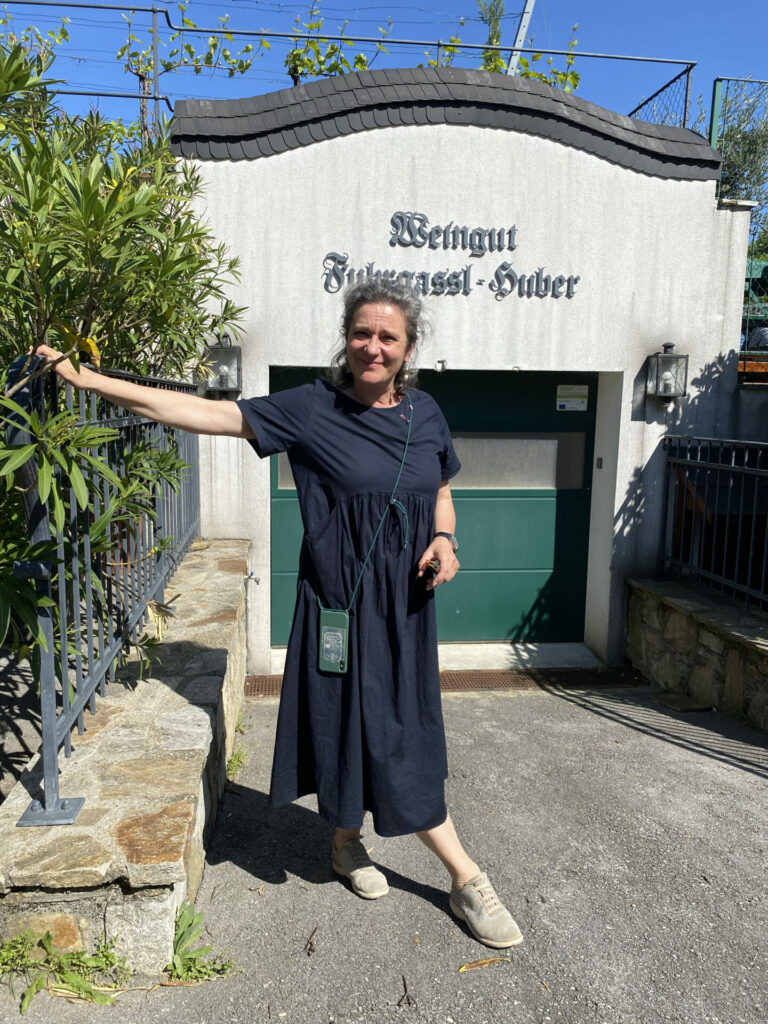
Fuhrgassl Huber makes excellent Grüner, Riesling, and rare Rotor Muskateller.
Here’s my considered recommendation: Buy anything you can find, from any vintage.
While this August was unusually cool, conditions favoured the preservation of acidity leading into a dry and sunny fall, with just enough sun and warmth to keep the fruit happy and stable.
The previous much-touted vintage was 2019, though the wines are an entirely different beast: more ripe and opulent. We tasted many wines from 2019 and 2020, and though the 2020s are considered leaner, this was still touted as a “classic” vintage. I preferred the 2020s across the board, as some 2019s tended to a bit of flab.
On that note, 2022 is looking good, with some caveats. It’s been a hot one, and so yields are reduced, but the quality of grape is holding steady.
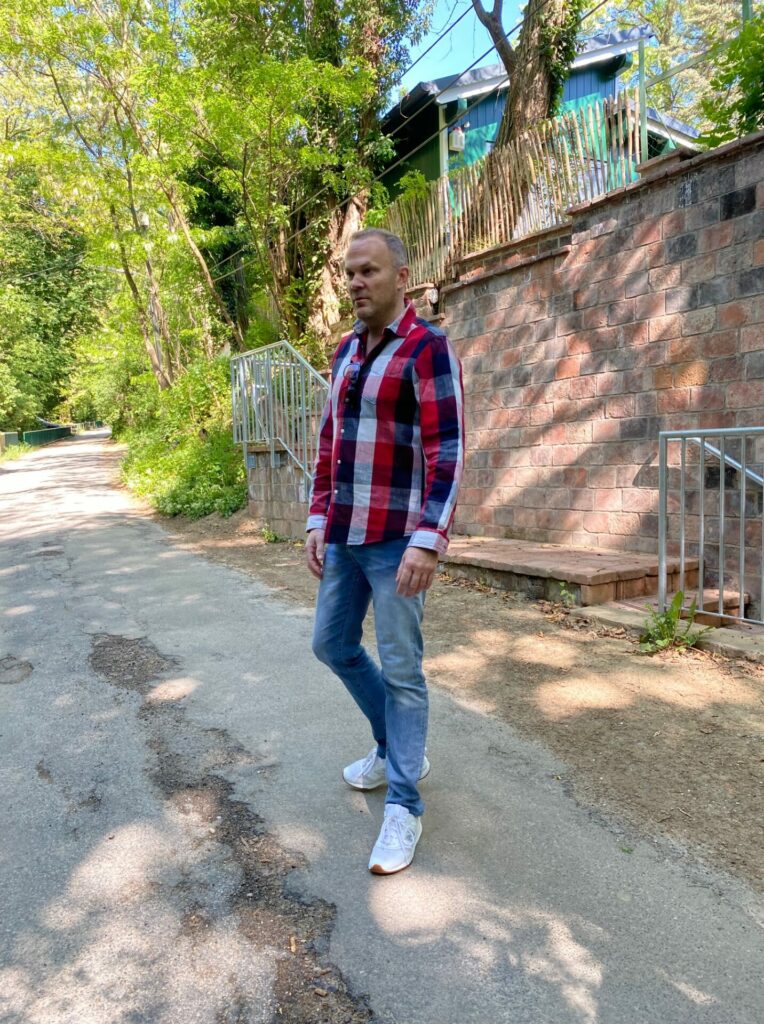
Rainer Christ leads us on a vineyard and path tour.
VieVinum and why it’s great
As I discovered on my very first day in Vienna, there are Canadians here — a lot of them, come for VieVinum. Wine agents, sommeliers, writers, influencers, pontificators, and shysters [Arf! – Ed.]. They are all here. In line for one tasting, we overhear in a German accent: “There are a lot of Canadians here, huh? Why is that?” Clearly the Austrian Wine consortium is set upon cultivating the North American market. And clearly they recognize that Canadians tend to gravitate to cool climates, field blends, schnitzel, and spargle (asparagus). Regarding the latter, we we are perfectly timed in May to enjoy, daily, a feed or asparagus both white and green — as the scent from the gents will attest. (I enjoyed the best asparagus dish ever created at Steirereck, widely lauded as Vienna’s best restaurant — which is surely accurate.)
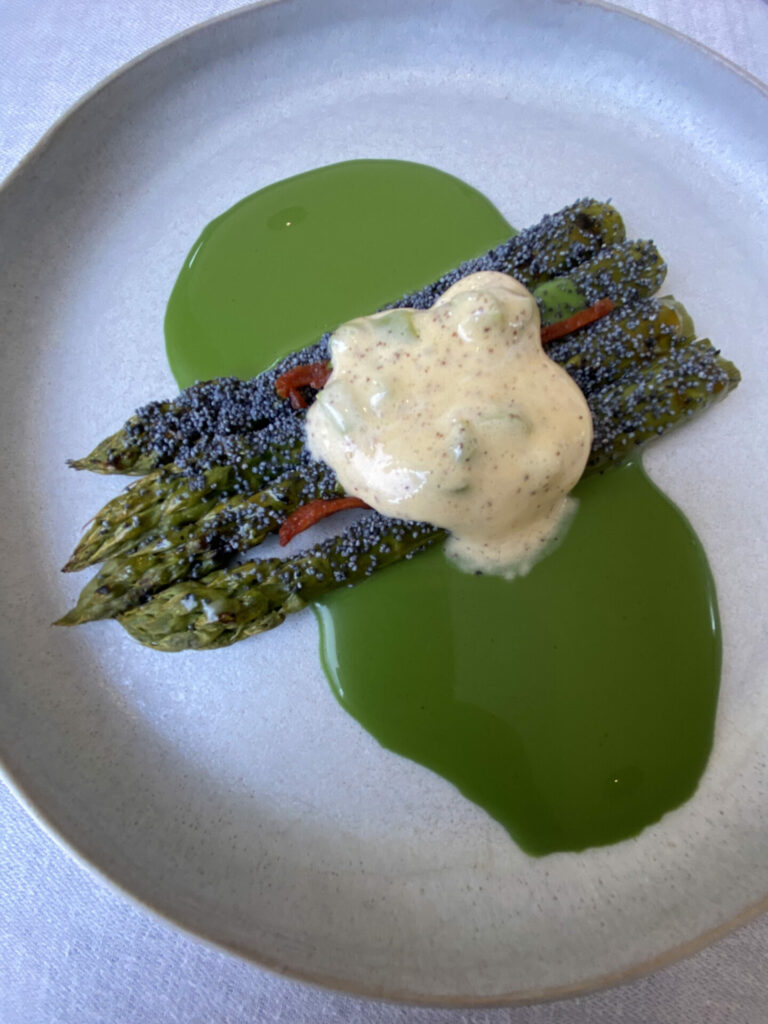
Green asparagus with poppy seeed, apricot and lamb’s lettuce from Steirereck restaurant.
The bi-annual VieVinum wine fair is billed as “perhaps the most elegant wine fair in the world.” I haven’t been to a critical mass of global wine fairs, but I can vouch for the “elegant” part. Of the handful of wine fairs I’ve attended, this one knocks it out of the park. The beauty of the location — — already sets the bar high. After a four-year Covid hiatus, the fair kicked off in 2022 with 480 Austrian wineries pouring their wares. The Austrian Wine Marketing Board hosted 1000 wine experts from 50 countries. I expect that my colleagues were equally impressed — certainly the ones that I spoke to exuded the sentiment.
The execution at VieVinum is far superior to many I’ve attended — there’s room to move and mingle, the signage is excellent, the support materials and the breakaway tasting events – all superior to any I’ve experienced. And the wines… I could go on about the wines. I should go on about the wines, but I’m not a “list and score” kind of guy. My recommendations are this: try as many Austrian wines as you can, find the producers you like, and buy their wines. That assumes, of course, that you can find them in the Canadian market. I can’t help with that.
Back to Vienna
Within hours of arriving in Vienna, we were on bikes heading to a few wineries, each not more than a 10 to 15 minute ride. (I rode pedal bike while the more special wine writers — John Szabo of Canada and Mona Haugin-Kind of Norway — got the powered bikes. But I made Szabo pedal home at the end of the day.)
We stopped at Zahel for a vineyard and cellar tour, then a tasting of wines and snacks from the heuriger run by the winemaker Alex Zahel’s mother. The wines here are all biodynamic. The vineyards overlook the city. It’s kind of like taking in the views of downtown Toronto from Casa Loma — the city is just “there.” Alex is fourth-generation, and his wife works with him at the winery. The wines… even the natural ones (apologies for my built-in bias) are wonderful. But it’s conventional all the way for my palate and, as Alex notes, since 2019 the effects of his biodynamic program have kicked in. We tasted a lovely pét-nat Gemischter Satz 2021 and a pét-nat rosé — both outstanding. Zahel goes deep on Gemischter Satz, and a vertical from the Kassgraben vineyard — 2017 to 2019 — reveals a style of wines that are racy, mineral, structured easy to love.
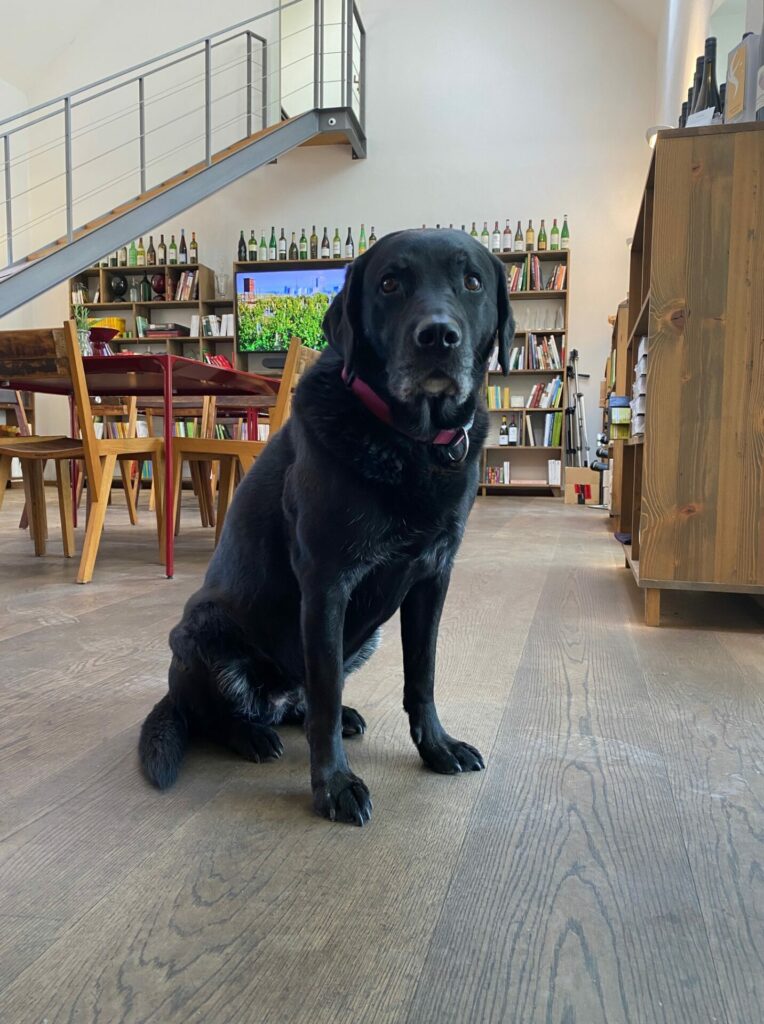
Winery dog at Weingut Wieninger.
Another highlight was the Christ winery — not the original Christ, but a more recent incarnation. Rainer Christ took us through some of his family’s vineyards, espousing the benefits of biodynamic and pollinator-friendly farming as we walk a vineyard ridge overlooking Vienna. The wines imbue this harmonious philosophy — in particular a pinot noir of rare exuberance and perfume. Not often does a wine shut down one’s ability to talk so effectively. This pinot did it. (A few days later, we taste through Rainer’s entire line at his VieVinum booth… every wine, a stunner.)
The next day we took the car… and at the heuriger Wieninger am Nussberg — located, as noted, on the Nussberg vineyards overlooking Vienna and the Danube — we enjoy a selection of meats, cheeses, breads, and dips that typify the casual fare offered at these wine taverns. This is one of the Nussberg’s most popular heuriger, owned by modern Viennese wine pioneer Fritz Wieninger, who sits with us for a tasting on one of the picnic tables set in the vineyards. This operation is fully biodynamic, family-run — and the wines reflect this authenticity.
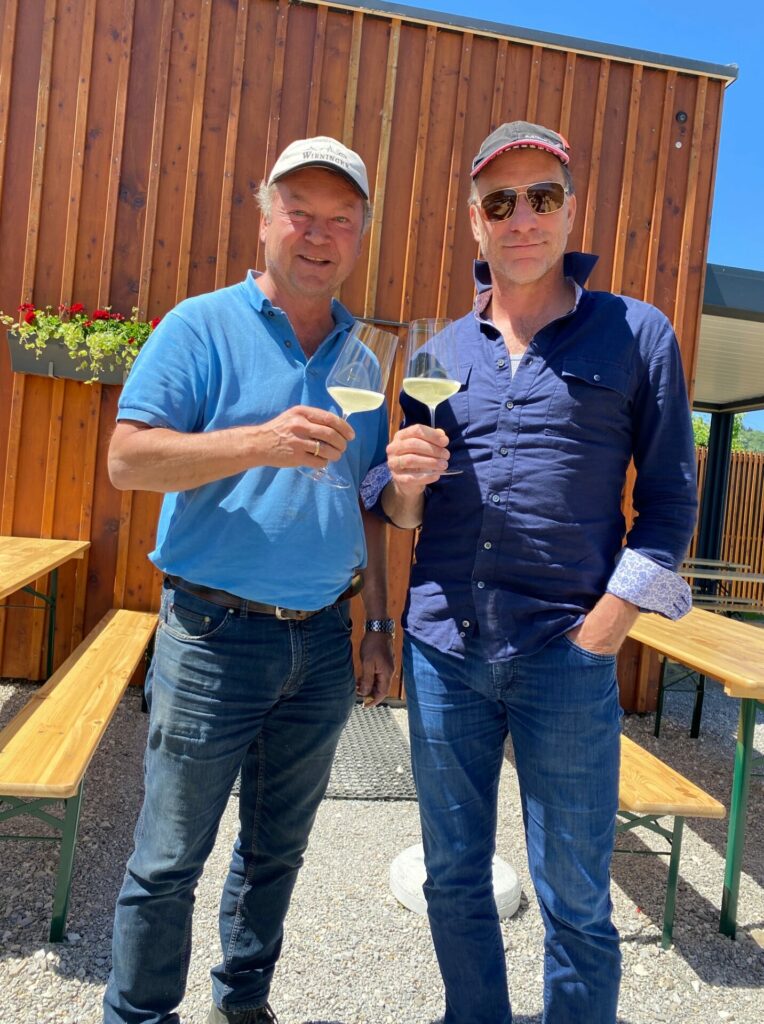
Fritz Wieneger of Weingut Wieneger and Master Sommelier John Szabo at the heuriger overlooking Vienna.
Standing with Fritz on the Nussberg, looking across the Danube to the vineyards on the Bisamberg hills where he also owns vineyards, one is struck by the closeness of everything — and yet the diversity of soil, aspect, elevation and proximity to the river make it clear how the infinite mesoclimates of Viennese vineyards can produce such a range of wine characteristics and styles.
This was only my second day in Vienna, with so much yet to come… still on a quest to find some good schnitzel.
[Stay tuned for Part Two. Maybe 3.]

